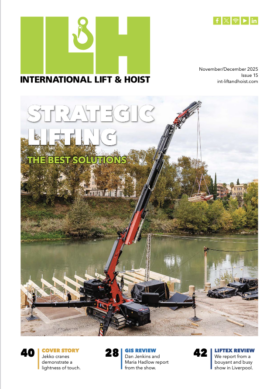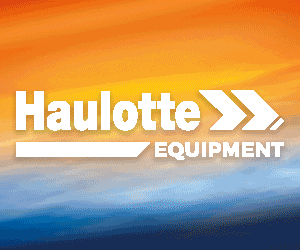)
Fortune Telling
Forecasting is an essential function for businesses of all sizes. The process brings value to organisations as it identifies key drivers that lead to better financial results.
We’ll inevitably come to exploring business forecasting in the COVID-19 era, but first let’s look at this important, yet often overlooked, subject more generally.
In my career, I have built hundreds of business plans and forecasts for recurring revenue service businesses, process manufacturers, medical and therapy practices, staffing agencies, non-profits, hard goods manufacturers – and a Mongolian uranium mining firm.
Inescapably, forecasting is an essential function for businesses of all sizes. During normal times, forecasts help managers and business owners in many ways. They inform capital allocation decisions, uncover potential capital requirements and shortfalls, and provide a tangible goal to achieve. The forecasting process itself brings value to organisations as it identifies key drivers that lead to better financial results.
For a service company that bills hours of work, a well-designed forecast might point out that there are not enough professionals available to generate designed revenues, for example. For a manufacturing business, growth plans might dictate a certain quantity of skilled tradesmen that may be unavailable in the local market. This would allow the firm to plan long-term training programmes or choose to expend capital on robotics – or both.
Many readers of this journal are involved in manufacturing. Manufacturers require a reliable forecast in order to make the proper investments for future growth. Capital-intensive manufacturers must be able to forecast their sales for years in advance to ensure the company can meet future customer demand. Reliability for these firms is essential, as the company will have to raise capital, usually through loans, debt or equity offerings, where mistakes can be extremely costly to the shareholders. Labour-intensive manufacturers need to understand where the sales of the future will be, as well as projected estimates of labour costs in different regions or countries.
Regardless, in almost every forecast I have built, the most critical input is the sales forecast:
What will we sell?
Where we will sell it?
What distribution strategy will we select to deliver the product or service to the customer?
And, of course, how much will we sell and how will we price it?
Interestingly, while the most critical input to a company forecast is the series of sales assumptions, most small to mid-size enterprises have few tools to help them predict future sales beyond a few weeks or months. Cost assumptions tend to be much easier to predict, except for forecasting new business initiatives or the results of a merger or acquisition. In part, the cost assumptions are easier because they often are computed as percentages of sales.
Manufacturing assumptions
Every company’s forecast will contain similar elements and, therefore, may look similar, but the underlying assumptions necessary to create the forecast will be very different for different businesses. A proper forecast will include an assumption section that is used to drive all the formulas in the model. It will include, at minimum, a balance sheet and income statement projection for the forecast period, and often will contain a cash flow statement. Depending on the size of the company, there might be additional income statements or gross margin forecasts by division or by product line.
One can find basic business plan templates on the internet to help stimulate thoughts as to a forecast design. Since the end result usually is presented consistent with the company’s annual financial statements, the forecast process typically starts with building the income statement from top to bottom.
Sales assumptions are usually developed first, as most cost assumptions will be based on the sales targets. Cost of sales is next, followed by other operating costs, selling, general and administrative expenses (SG&A) and others. Most forecast documents will look very similar from company to company as the forecast mimics the financial statements. But the assumptions used, and the methodology to develop the assumptions will be very different for each business.
Take two manufacturing companies, one that makes plastic zip bags and another that makes custom lighting fixtures. The financial statement forecasts of the two companies will appear similar (sales, cost of sales, etc.), but the assumptions used to build the forecasted financials will be very different. For cost of sales, the plastic zip bag manufacturer might focus on machine throughput, the cost of plastic resin, labour, packaging and transportation costs. The custom lighting fixture manufacturer might focus on materials costs, warranty / return levels and inventory levels. Both will take these disparate assumptions that will be presented as ‘cost of sales’ but the assumptions and the data necessary to create the assumptions, are unique to each business.
Forecasts can be created for periods of time that vary based on the purpose. Strategic plan forecasts might be developed for three to seven years, or even longer for companies in certain industries. Annual forecasts are common in most businesses and often become the company budget for the year. Distressed companies often prepare 13-week cash flow forecasts in great detail to make sure there is sufficient cash to make it through a difficult period.
At Caldwell, we have three different forecast periods that we use; we have a five-year forecast that is used for high-level strategic planning. As with most firms, we have an annual budget, which is the document we most frequently review and report against. We also look forward for 90 days for cash flow, but we are fortunate that we have plenty of working capital so we have not had to develop a detailed and precise 13-week cash flow forecast. Many businesses in the current environment should be building a week-by-week cash forecast to manage the economic uncertainty. We are prepared to initiate that effort should our economic situation degrade.
The frequency with which a business should forecast depends on the forecast. I’ll explain: for long-term strategic forecasts, these would normally not be amended ever. A new five-year plan would be developed in the subsequent year. Annual forecasts might be amended if there are significant or unusual changes that occur. In my experience, this is rarely necessary. This year is one of those rare circumstances; we revised and adjusted our annual plan in April 2020 as a result of the pandemic. If used, short-term cash flow forecasts are updated daily or weekly.
It’s vital to have a mix of conservatism and ambition in a forecast. We forecast conservatively for purposes of evaluating our ability to service debt and afford capital expenditures; we also forecast conservatively for managing cash. For our annual planning, we set our budget at a moderate level. But we also set ambitious, or aspirational, targets in separate forecasts to challenge us to go beyond the bare minimum.
It’s important that businesses are transparent with departments about forecasts. I’ve heard of businesses that work to different numbers in the boardroom to the salesforce, and then altered again to the shop floor. As a general principle, it is my belief that you can’t create expectations from a team unless you actually share those expectations with the team. In addition, Caldwell is a 100% employee-owned company, so each of us are direct stakeholders in the business and have the right and responsibility to contribute to our planning and drive our success in exceeding plans.
The extent to which departments report and reporting methodology depends entirely on the needs of the company and the capabilities of its IT systems. A well designed enterprise resource planning (ERP) system will enable ongoing financial and operational reporting of key metrics against forecasted results. At times, certain operational metrics may require manual reporting. For example, many manufacturers will track non-conforming product errors in order to improve quality and reduce scrap. But the process of reporting non-conformance and gathering the data necessary to learn from the event, usually requires a manual gathering process.
Financial metrics should be able to be derived automatically from the company’s reporting system. If too many financial metrics require manual intervention, the company should consider whether or not the metric is important enough to develop an automated data gathering solution, or if alternate metrics might be sufficient.
The new world
Inevitably, we must acknowledge the impact COVID-19 has had on forecasting and business finances more generally. What a time it’s been for everyone from CEO to janitor. After the pandemic hit, with all the fear and uncertainty in the global economy, our first response was to anticipate a significant downturn in revenues and to figure out what actions would be necessary to survive as an ongoing entity. We adopted a very revised plan for 2020 that contained three elements:
- Change our cost structure to breakeven on a cash basis for the year.
- Provide the ability to ramp up our production if and when the economy improves by retaining as many skilled workers as possible.
- Build in much more flexibility in our operations to anticipate and respond to drastic outcomes (for example, a viral breakout within our workforce or perhaps in the workforce of key customers or suppliers).
If the original forecast was well constructed, with clearly defined assumptions used to drive formulas, then amending the forecast should be relatively easy. Model design is critical. The first rule of modelling is that no assumption is hard-coded anywhere in the worksheet. The second rule is no formula is overridden and, instead, a new assumption is created. If these model design techniques are followed, making quick revisions is not difficult. Sadly, I have seen countless examples in my career of projection models that break these rules. If that is how the original model was built, you will almost always be better off starting from scratch.
Unless you are modelling a business where sales have increased since the pandemic began, I assume nearly all businesses planned and executed layoffs, furloughs and pay cuts. These are critical cost changes and must be modelled to allow a forecast of cash requirements based on lower anticipated revenues and a lower cost base. In our case, we used a combination of all of these cost-cutting methods. Also, we have developed triggering points where we will be able to reinstate some or all of the pay cuts and, eventually, open up hiring for positions that were eliminated in response to the economic downturn.
We also received a significant loan under the Payroll Protection Program. Proceeds from this program enabled us to keep staff for an extra eight weeks at full pay. Unfortunately, once we expended those funds, we had to take additional actions. An additional benefit was that we had extra time to properly evaluate our future plans and decide on employment levels that would give us the greatest flexibility to adapt our business in the near future.
I believe most businesses deal with the world as it is now, rather than making comparisons to something in the past that is no longer relevant. I’m sure many of us yearn for the ‘good ole days’ of February 2020, but in my opinion, business will simply be measured as it is now. Part of that new reality is that revenue streams are more uncertain, and additional operational costs to reduce the risk of employees contracting the virus will be with us for some time.
Depending on your business, forecasts will require deeper thinking by senior management. Every aspect of every business will be reconsidered due to the pandemic. Most companies succeeded in transitioning to a work-from-home environment for office workers, but manufacturers still need plant workers in the plant. Do you need as much office space? Will IT expenses increase to support all the home workers? What operational changes are needed in the plant to keep workers as safe as possible? What will the costs be for those changes?
Other larger changes must be considered as well. A few months ago, we lived in a ‘just-in-time’ world. Inventory levels were kept at minimum levels and supply chains were expected to deliver product within a few days from anywhere in the world. Now, businesses are considering if smaller, broader geographic deployment might be a better approach. Structural changes also require consideration. Will your customers survive? Will you continue to extend customer credit at the same levels as you did in 2019, or will you tighten credit? Will your suppliers insist on tighter credit terms for you? How will you handle leave rules for workers in the future? Do you have policies that encourage people to come to work sick?
Forecast models necessarily will include more variability in assumptions. I anticipate modelling will be more complex such that there will be probability estimates assigned to different possible outcomes. Businesses will then have to decide if they will stick with a single forecast for a given period, or if there will be a forecast range used for key categories.
For example, a company might predict: $10 million of sales in a normal environment, for which they assign a 60% probability, $8 million of sales in an extended pandemic environment, for which they assign a 25% probability, and, $12 million of sales for a post-pandemic high growth environment, for which they assign a 15% probability. The expected value of sales with these assumptions is $9.8 million, but the range is $8-$14 million. Do you build your budget on the $9.8 million? Do you build a budget for each extreme in the range? Or do you build some flexibility in your cost structure that will adapt based on what starts actually happening? We plan on building in flexibility as much as possible so that we can manage through any of those outcomes.











